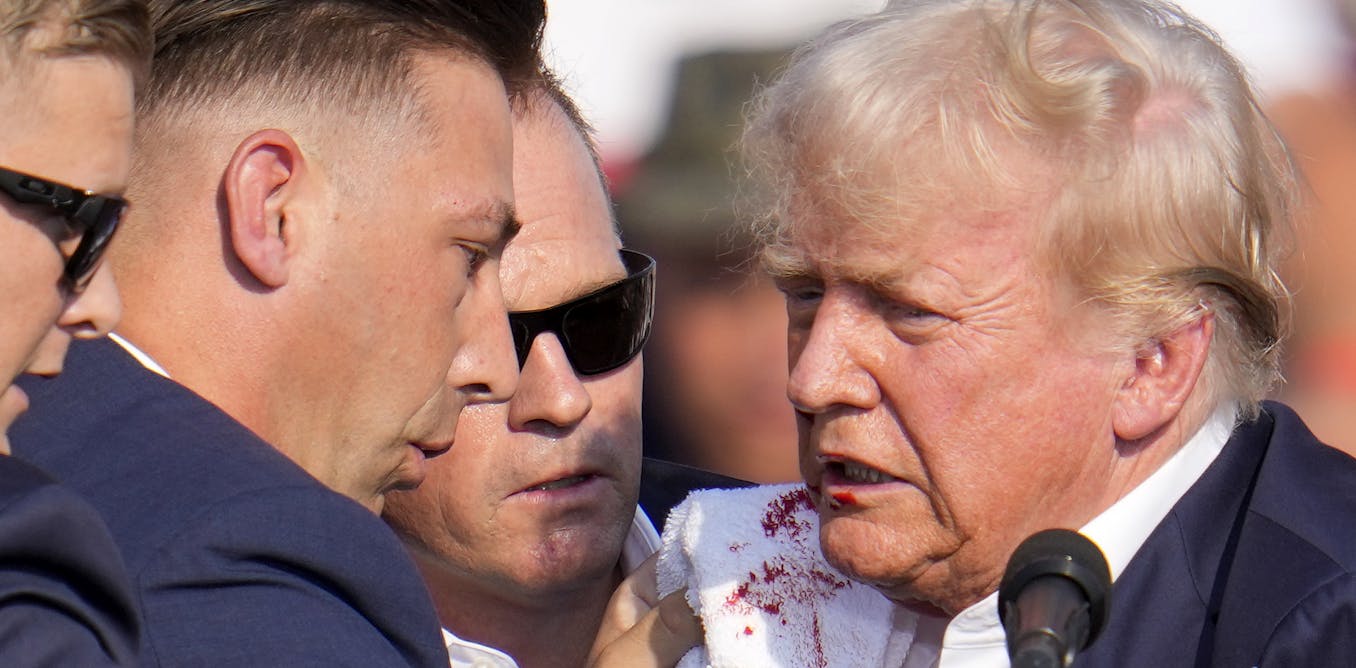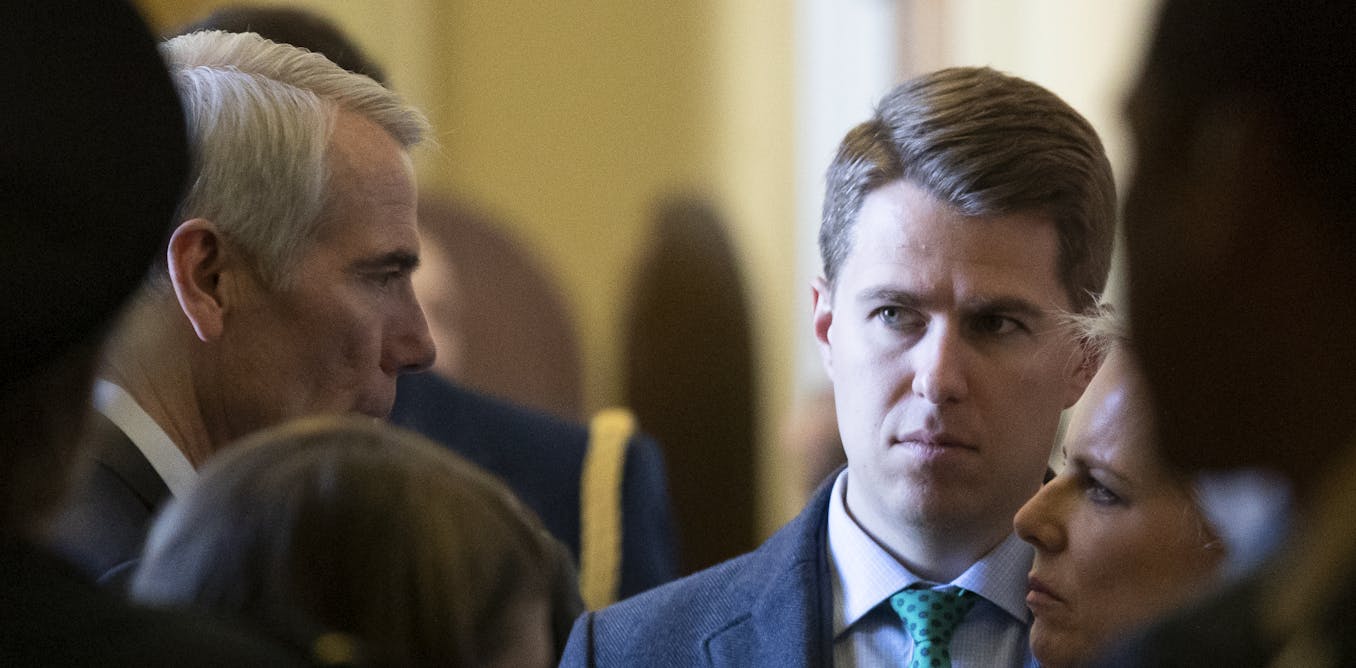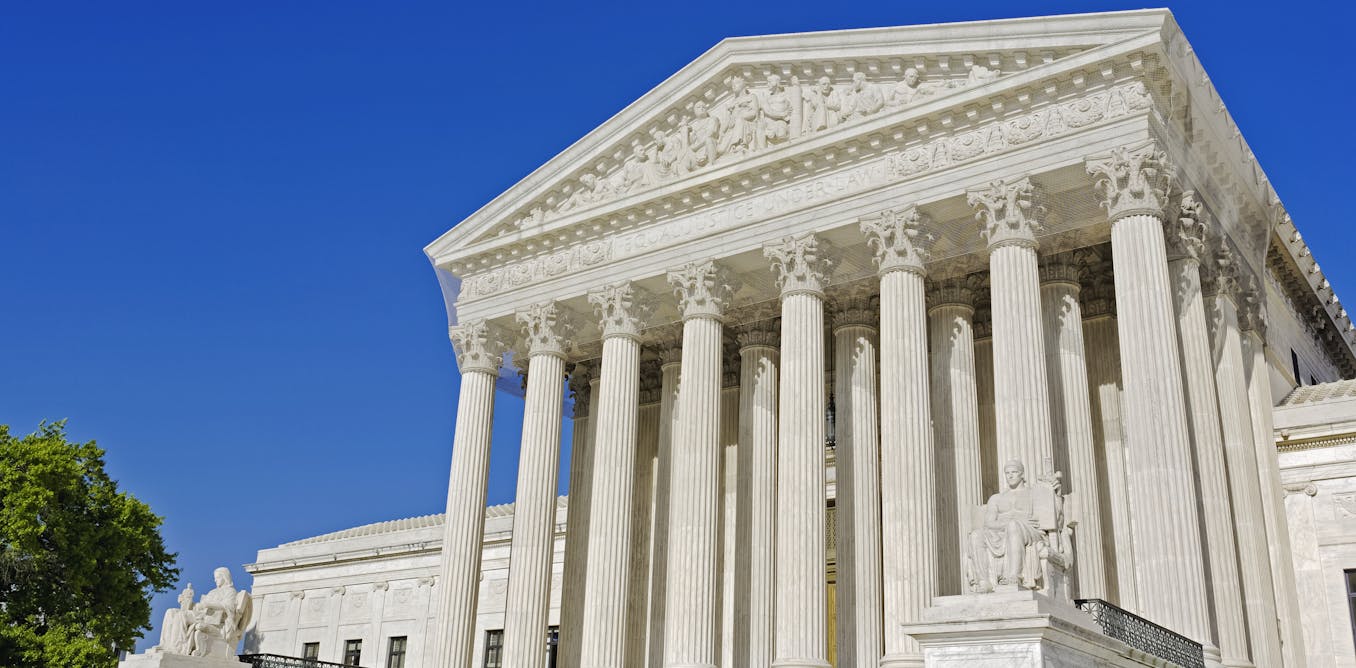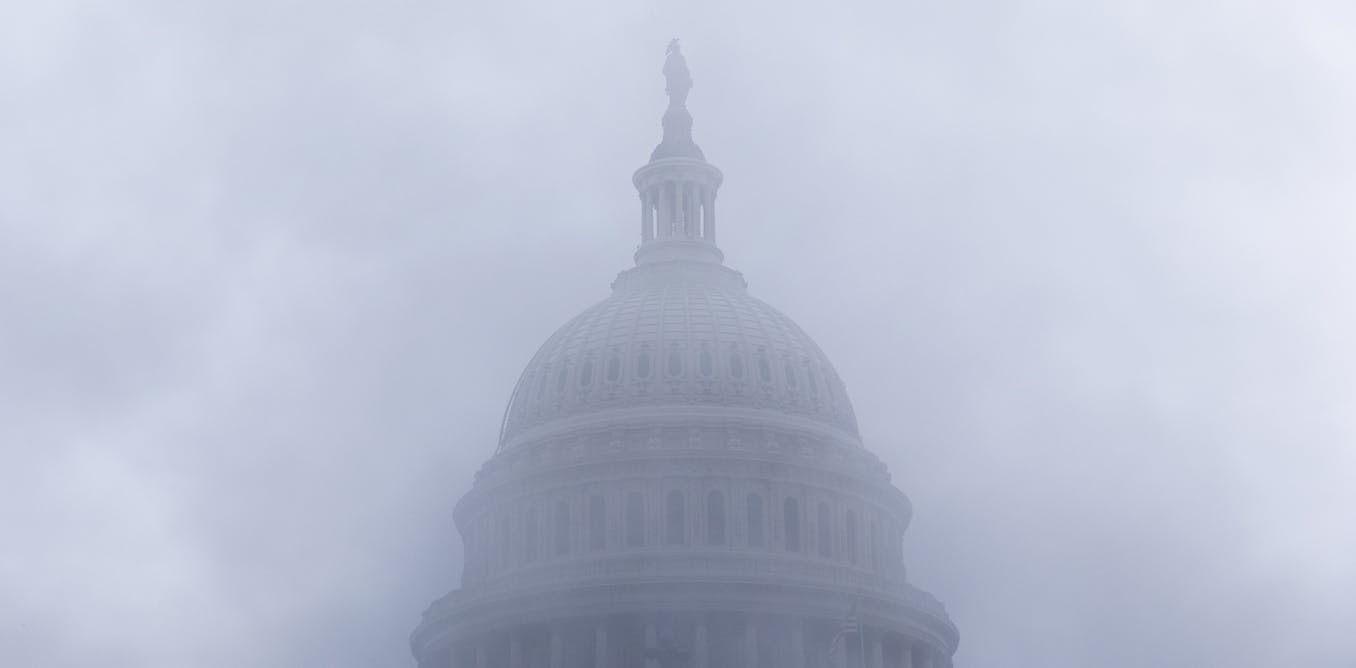As investigators analyze what led 20-year-old Thomas Matthew Crooks to try to assassinate former president Donald Trump – and how Crooks was able to fire at the former president at a heavily patrolled event on July 13, 2024, one thing is clear, according to Department of Homeland Security Secretary Alejandro Mayorkas.
“A direct line of sight like that to the former president should not occur,” Mayorkas told ABC news on July 15. That same day, President Joe Biden established an independent review of the shooting.
Amy Lieberman, a politics and society editor at The Conversation U.S., spoke with Javed Ali, a scholar of counter-terrorism at the University of Michigan and a former FBI and Department of Homeland Security official, to better understand the security failures that this shooting exposes, as well as how this attack may be part of a larger pattern.
Jeff Swensen/Getty Images
What stood out to you most about this shooting?
There was an obvious security failure, and you don’t need my background to know that. The main questions that these experts are going to be considering now is how did it happen, why did it happen, and how do you prevent it from happening again?
The fact that Crooks was able to literally, in broad daylight, get on the roof of a building that had a direct line of sight to the campaign stage is shocking – it wasn’t inside the security perimeter, but it was still very close. And the angle that Crooks had was a straight shot. How did Secret Service protection not consider this possibility?
They would have had a really robust team of dozens, if not hundreds, of people walking through the site and observing all of the physical structures weeks ahead of the event. The fact that this vulnerability wasn’t apparently identified in the event planning is disturbing.
Almost immediately after Crooks began firing his AR-15, Secret Service counter-assault teams saw and killed him with one or two shots. In a way, the system worked in response to the attack, but the fact that an attack happened is where the failure occurred. If I were running the Secret Service, I would absolutely shut down outdoor rallies until they come up with a plan to mitigate these kinds of risks.
Could this attack influence how the Secret Service carries out its work?
It is safe to assume there will be a heightened Secret Service protection around President Joe Biden and Trump. Biden announced on July 15 that he would give Secret Service protection to Robert F. Kennedy Jr., too, as a third party candidate.
This is also going to cause the Secret Service to make certain choices about resources because their capabilities are not infinite. If they have to pull people off of different missions to be on other protective ones, there is a cost to that within the organization. They will need to study how much more new capability they need to develop, in order to better protect presidential candidates if they can continue to have these outdoor events.
I am curious whether there needs to be some aerial observation capability at these campaign events to understand what is happening on the ground. If Secret Service or some other federal law enforcement agency could fly drones above an outdoor campaign event – and in coordination with the Federal Aviation Administration to control the airspace – this would allow the agency and its partners on the ground to have a better, three-dimensional picture in real time of potential security risks and threats. This is the type of system in which the U.S. military operates overseas.
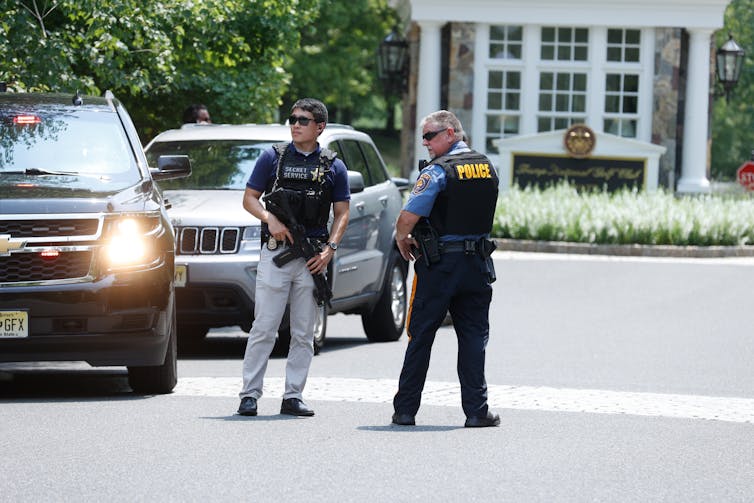
Lokman Vural Elibol/Anadolu via Getty Images
Does this attack potentially create the risk of more domestic extremism?
After the Jan. 6, 2021, U.S. Capitol attacks, I would assesses the chance of another mass scale violent event – whether it is Jan. 6, 2025, or something similar – as extremely low, because the federal government is looking for that now. The insurrection at the Capitol was a Sept. 11, 2001-like black swan event that occurs very infrequently. Just like in the run up to the 9/11 attacks, there were lots of clues, but the clues were not assessed enough and the security response was not sufficient, either.
Now, the Republican National Convention is going to be buttoned up with protection, and so will the Democratic National Convention in August. When we get to the November elections, we are likely going to see law enforcement at polling stations, with the Department of Homeland Security also working to make sure that the cyber-infrastructure is protected and hardened for voting, and to help combat online misinformation and disinformation about candidates.
When it comes to the Electoral College count in early 2025 after the election, I would think that would may already have been designated a formal “National Security Special Event,” a Clinton-era security policy tool that partners the Secret Service with the FBI for building robust security precautions for high-profile events 12 to 18 months in advance.
Is this shooting in line with other kinds of violence seen and experienced in the U.S.?
Crooks’ attack on Trump wasn’t like the Pulse nightclub mass shooting in 2016 or other mass shooting events that we have seen over the last several years. Crooks was seemingly trying to just kill Trump, and tragically, some of the rounds hit other people.
Most of the domestic attacks we see in the U.S. are almost always advanced by a single individual, like Crooks. Going after a former president is the most extreme end of that threat spectrum, but there have been several other attacks against sitting presidents, former presidents or presidential candidates. This goes back to the 1865 assassination of President Abraham Lincoln. In that case, it was also just one person who shot Lincoln.
This lone wolf phenomenon of domestic extremism is the most acute threat facing the country – and is also the hardest kind of threat to preemptively stop. You are dealing with a single individual who is flying under the radar and is likely not an FBI suspect. But generally speaking, this person is angry and possibly radicalized, and for a while, they are not doing anything illegal in pursuit of that, until then something happens. It seems like an overnight thing, but it never is – it is always a long, slow, methodical process for many of these individuals to go from violent radicalization to action.

